Foodfirstorg the Hands That Feed Us
Vigan's Public Market: The Commons in the Hands of Farmers and the Poor
In the last two or three decades, the food sovereignty movement has been reinventing an institution – the farmers' market – that has been an institution in much of the rest of the world for centuries. Public markets, where local farmers and other small vendors sell to people without much money, are institutions that not only serve an important social purpose, but are structures set up by governments in response to popular need and pressure. That makes them part of the public space that people often have to struggle to protect.
Emil de Guzman, a Filipino-American activist from San Francisco, describes the role of the public market in Philippine towns: In the Philippines at the heart of any city or town is a plaza. At the center of all activity is the palengke, a huge one story structure housing the local vendors, shopkeepers, and small businesses under one roof, in compartmentalized units buying and selling goods and services.
"The palengke is purposely sectioned to accommodate vendors standing side by side sellingthe same products: butchers selling meat, sellers of fresh fish and seafoods, rows of newly harvested vegetables. All over the coconuts vendors are sectioned off nearby other stalls selling the garlic and onions, then tofu, then eggs, then mangoes, papayas, dried fish, etc. Then nearby sections sell clothes, cosmetics, umbrellas and the list goes on. Thousands come to the palengke to shop and buy/bargain at the lowest prices."
Vigan's public market is just the latest iteration of the city's history as a trading and market center, going back centuries. Vigan is one of the oldest cities in the Philippines, and was founded by Chinese traders long before the arrival of the Spaniards. In the language of these migrants from Fujian Province, the name Bi-gan meant Beautiful Shore.
In Vigan they traded gold and beeswax from the Cordilleras, the mountain range that forms the spine of Luzon, for Chinese porcelain and other goods. The status of the Chinese ethnic minority in the Philippines is still controversial. The Chinese community even established a museum in Manila, arguing that their presence was a crucial part of Philippine history and that Chinese workers helped build the country over centuries.
The Spaniards colonized the islands, capturing Vigan in 1572, and making it the administrative capital of northern Luzon, called Nueva Segovia. By then a central market here was long established. It provided a critical function for farmers, who brought food into the city, and for the city dwellers who depended on them. All over the world similar markets have come into being to fulfill the same function.
The current public market was rebuilt in the years after the fall of the Marcos dictatorship. Despite all the changes in how food and clothing are distributed and sold in a modern city, the market is still a destination for thousands of people. It's prices are lower than most other places, and the experience of buying something is much more personal. In the interactions between stall owners and their customers, it's clear that in many cases people have known each other for years.
Stay in the loop with Food First!
Get our independent analysis, research, and other publications you care about to your inbox for free!
Sign up today!
I've always loved our farmers' markets, especially ones like those in Oakland where older Chinese women crowd the stalls, attracted by the market's lower prices. I've often wondered whether this institution will still be with us in another 20 or 30 years. Walking through the public markets of the Philippines, I can see a way that people have been able to institutionalize markets like it, keeping its people-serving purpose intact. Looking at these photographs, I can see a little of what might be Oakland's future here in Vigan.
This publication was changed from an earlier version to add more of the author's thoughts and experiences about farmers' markets.

An old man and a boy in the window of a colonial building in the old mestizo, or Chinese, section of Vigan. Photo copyright © 2019 by David Bacon.

Selling coconuts and other vegetables at a stall in the market. Photo copyright © 2019 by David Bacon.

A banana stall usually has several varieties. Photo copyright © 2019 by David Bacon.

Selling pots and other kitchen wares, often to farm families from the countryside. Photo copyright © 2019 by David Bacon.

A girl in a world of her own. Photo copyright © 2019 by David Bacon.
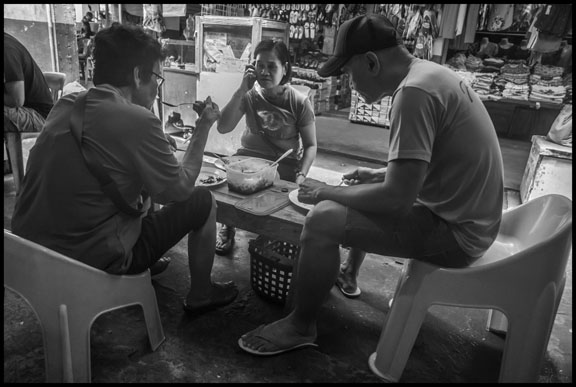
Stall holders eat lunch and make their calls. Photo copyright © 2019 by David Bacon.

Buying groceries. Photo copyright © 2019 by David Bacon.
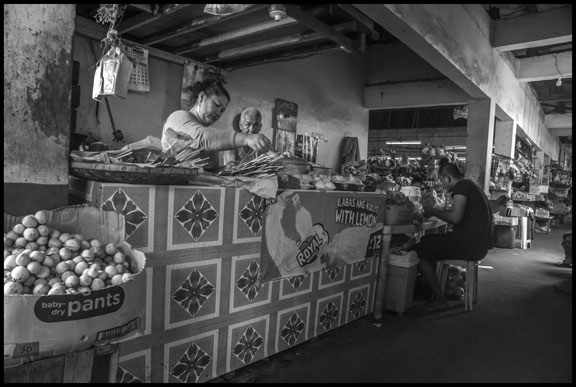
Many stall in the market serve cheap meals. Photo copyright © 2019 by David Bacon.

A woman sells rambutans from a table in the hallway of the market. Photo copyright © 2019 by David Bacon.

Children of the stall owners often work there with their families. Photo copyright © 2019 by David Bacon.

Farmers and stall owners have to get up early to arrive when the market opens, and then fall asleep during the day. Photo copyright © 2019 by David Bacon.

Catching sleep during a lull in the market. Photo copyright © 2019 by David Bacon.

Some customers know the stall holders very well, like at this stall selling rambutans. Photo copyright © 2019 by David Bacon.
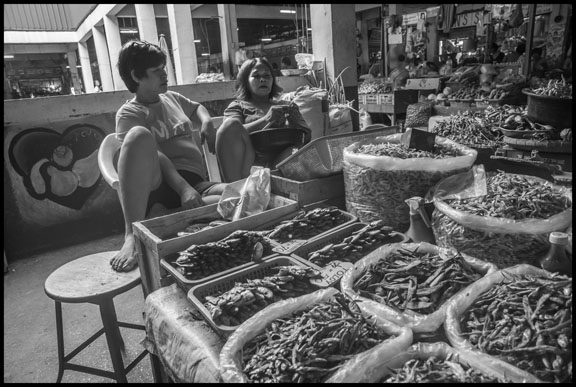
Relaxing behind bags of beans and tamarindos.
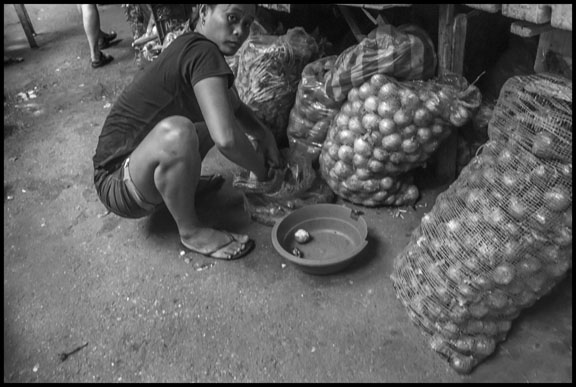
A farmer unpacking bags of calamansi fruit. Photo copyright © 2019 by David Bacon.
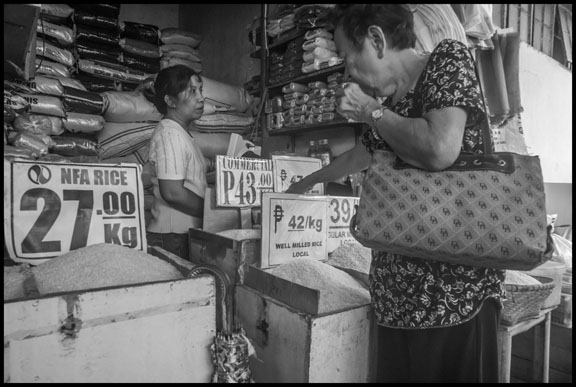
Rice is the staple of the Philippines, and is grown and sold in a number of varieties.

A girl with her mom at the rice stall. Photo copyright © 2019 by David Bacon.

Near the market is an outdoor food court, where these high school girls have come to eat and take selfies. Photo copyright © 2019 by David Bacon.
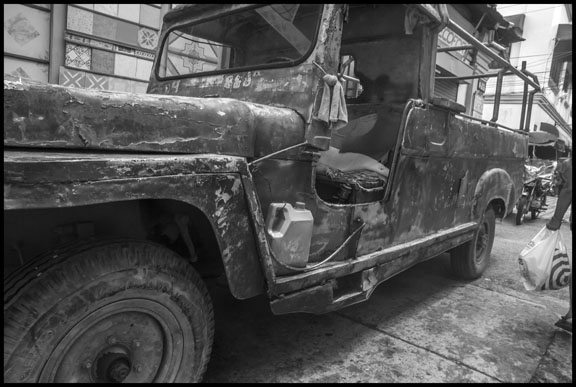
An old truck at the side of the market. Like many it was built in the style of WW2 jeeps. Photo copyright © 2019 by David Bacon.
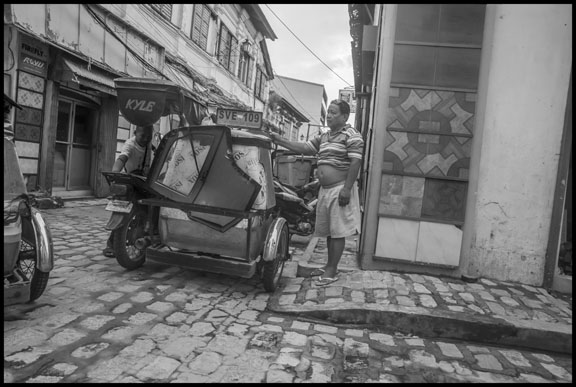
A driver waits outside the market to pick up a fare in his tricycle, the most common kind of public transport in Vigan. Photo copyright © 2019 by David Bacon.
Source: https://archive.foodfirst.org/vigans-public-market/
0 Response to "Foodfirstorg the Hands That Feed Us"
Post a Comment